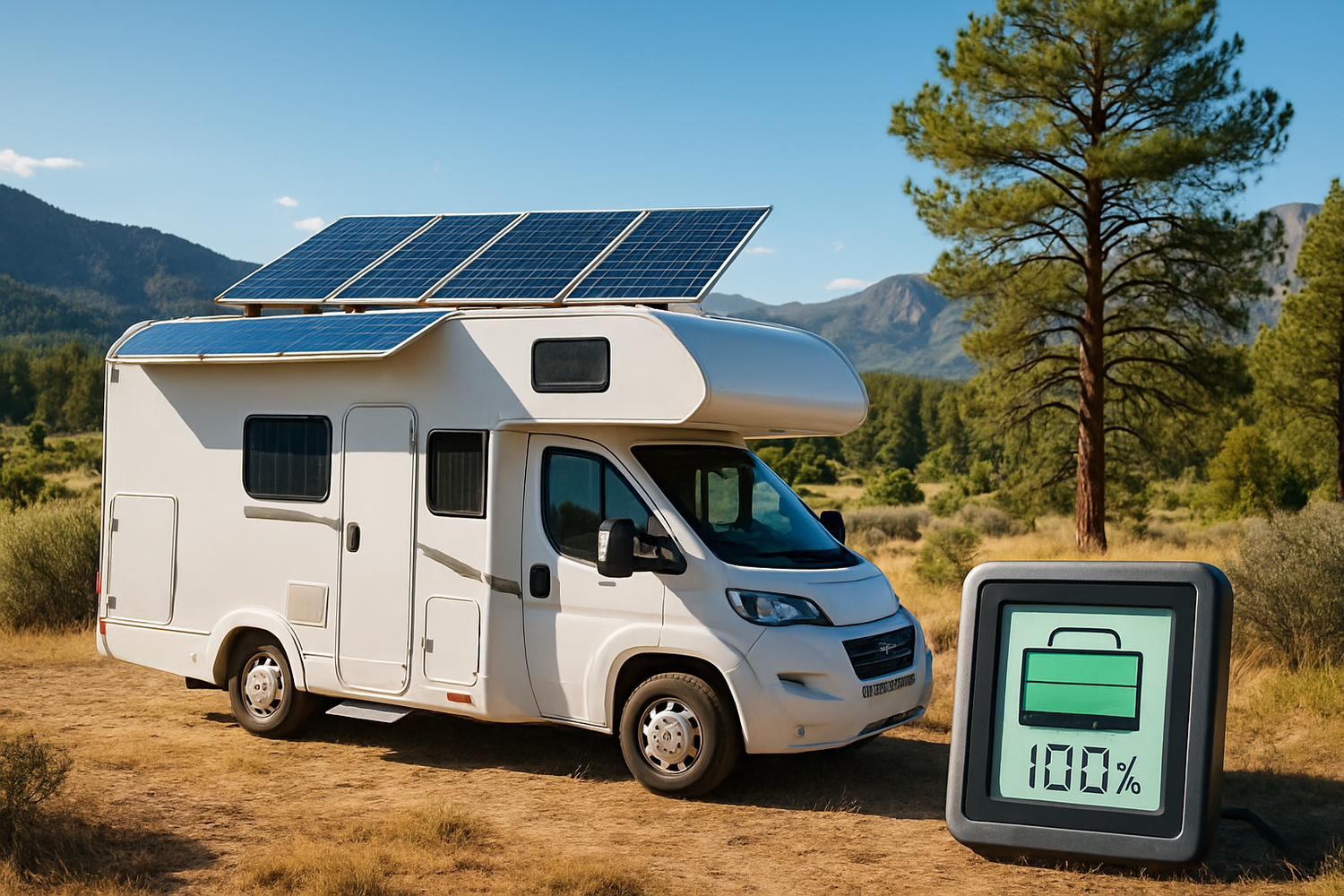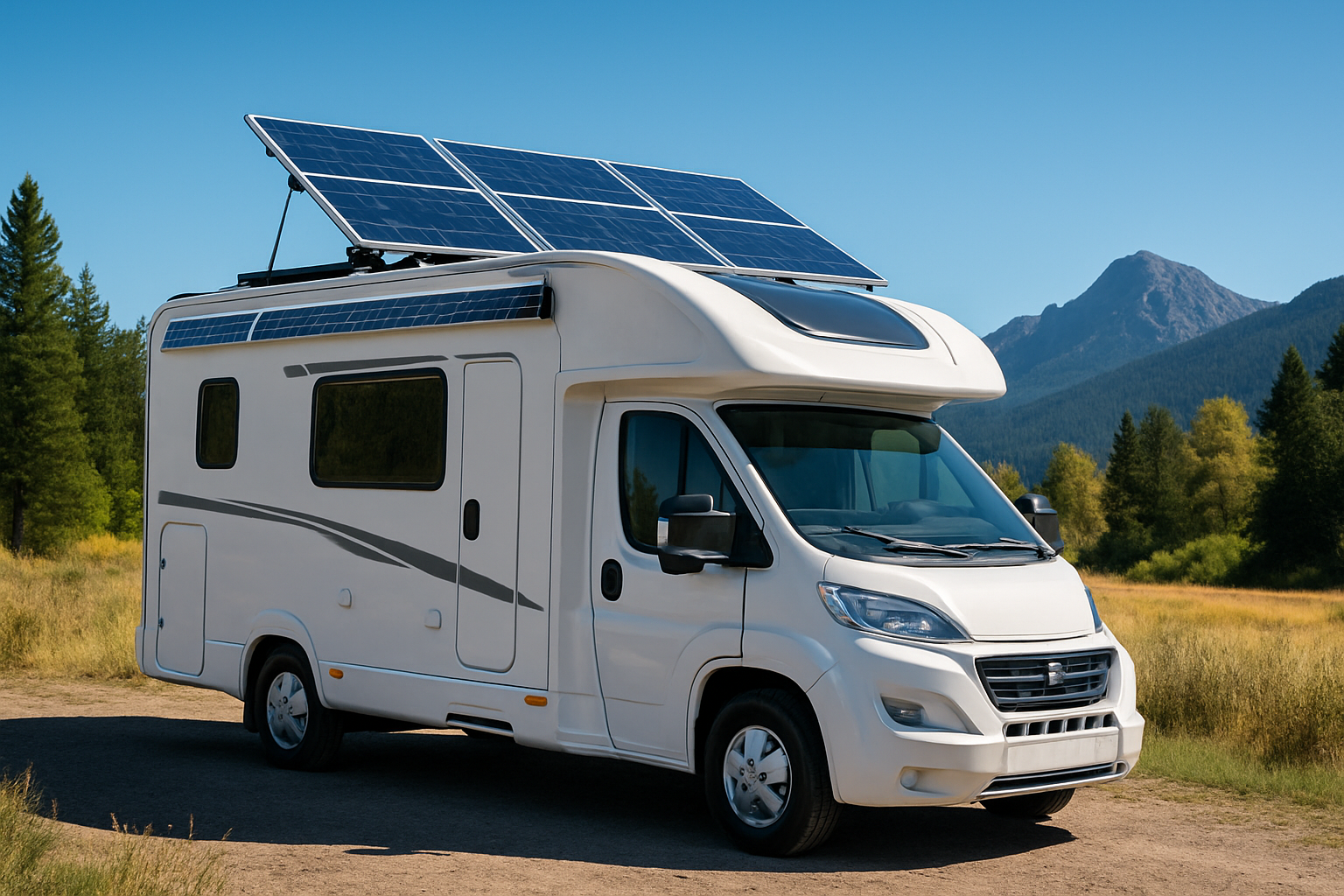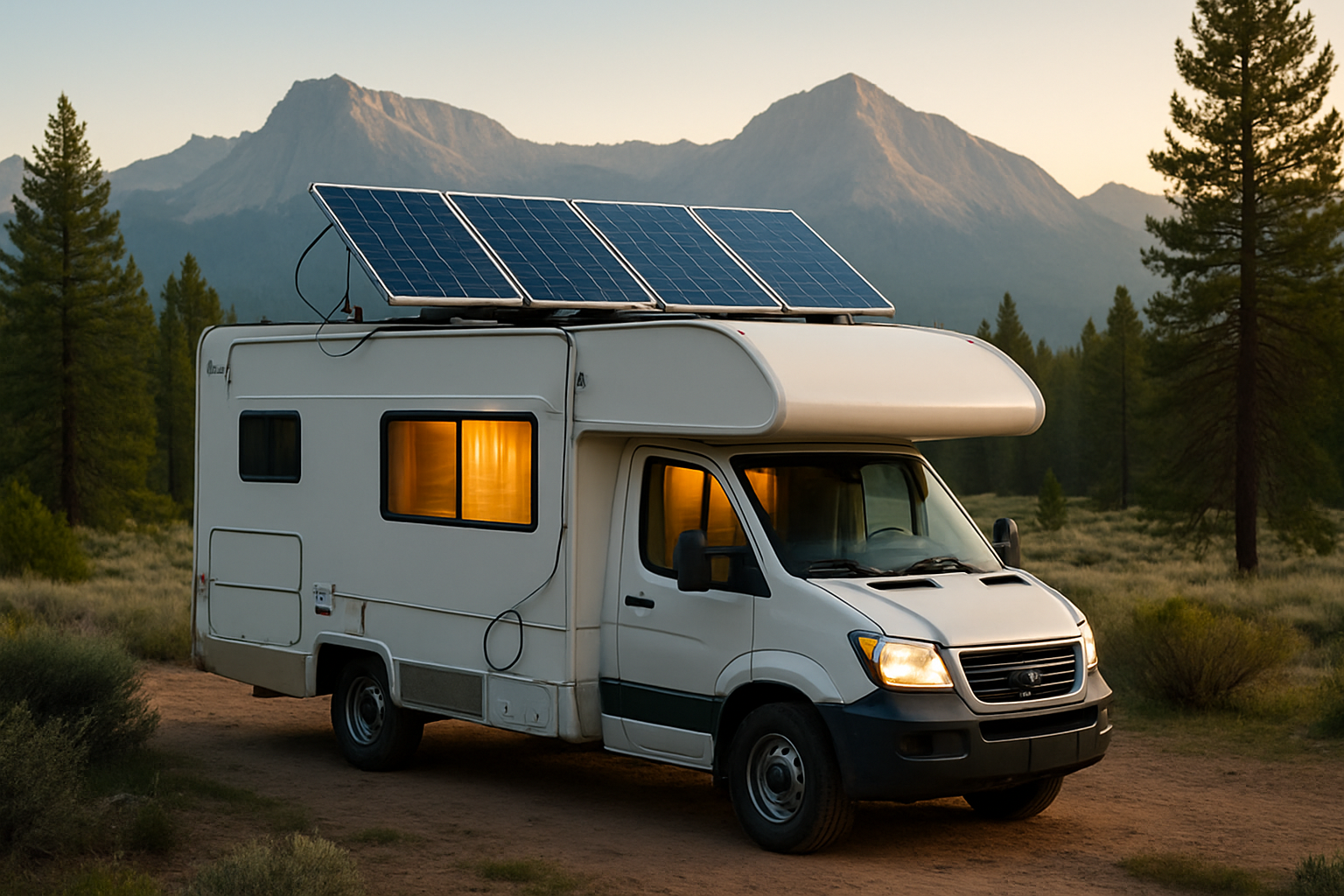Embarking on a two-week RV adventure requires careful planning, especially when it comes to power. Relying solely on shore power limits your travel options. An independent power setup, like a robust solar system paired with advanced battery storage, offers the freedom to explore remote locations. This case study details the performance of a 600W solar array coupled with a 200Ah LiFePO4 battery during a 14-day off-grid journey, providing practical insights for your own campervan power needs.

Designing the Off-Grid Power System
Building a reliable RV power system begins with selecting the right components. For this two-week trek, the goal was to support typical campervan appliances without needing external power sources.
Solar Panel Selection: 600W Array
A 600W solar panel array was chosen to provide substantial daily energy generation. This capacity offers a good balance between power output and roof space availability on most RVs. The array consisted of multiple panels wired in parallel to mitigate the impact of partial shading. If one panel gets shaded, the entire system's output is not severely compromised. This parallel wiring approach allows each module to operate independently, boosting overall efficiency, according to research by EERE Success Story—Small Wonder: New Converter and Wiring Setup Can Improve Photovoltaic Module Performance.
- Panel Type: Monocrystalline panels, known for their higher efficiency in direct sunlight.
- Mounting: Adjustable mounts allowed for tilting the panels to optimize sun exposure, especially during morning and late afternoon hours.
Battery Storage: 200Ah LiFePO4
The heart of any off-grid system is its battery bank. A 200Ah LiFePO4 (Lithium Iron Phosphate) battery was central to this setup. LiFePO4 batteries offer significant advantages over traditional lead-acid batteries, including a longer cycle life, higher usable capacity (often 80-100% depth of discharge), lighter weight, and consistent power output throughout their discharge cycle. These characteristics make them a high-performance, safe, and reliable choice for demanding applications like RV travel.
- Capacity: 200 amp-hours (Ah) at 12V provides 2400 watt-hours (Wh) of usable energy, offering a substantial buffer for cloudy days or high evening consumption.
- Battery Management System (BMS): An integrated BMS protected the battery from overcharging, over-discharging, over-current, and extreme temperatures, ensuring safety and longevity.
Charge Controller and Inverter
An MPPT (Maximum Power Point Tracking) solar charge controller was used to efficiently convert the variable voltage from the solar panels into the correct charging voltage for the LiFePO4 battery. MPPT controllers can increase production by 5% to 15% compared to older technologies. A pure sine wave inverter converted the battery's DC power into standard AC power for household appliances, ensuring compatibility and protecting sensitive electronics.
DC coupling, where power flows directly from PV panels through a DC-DC converter to charge the battery, is often more efficient. This method requires only one inverter, simplifying the system compared to AC coupling which needs two, as highlighted in EERE Success Story—How Power Optimization Technology Research Built a Successful U.S. Business.
The 2-Week Trek: Power Dynamics in Action
Over the 14-day journey, the system faced varying weather conditions and daily power demands. Monitoring its performance provided valuable data on real-world capabilities.
Daily Energy Consumption Profile
Typical daily consumption included a 12V compressor refrigerator, LED lighting, a water pump, charging laptops and phones, and occasional use of a small coffee maker or microwave via the inverter. The average daily energy draw was approximately 800-1000 Wh.
| Appliance | Estimated Power (Watts) | Daily Usage (Hours) | Daily Consumption (Wh) |
|---|---|---|---|
| 12V Refrigerator | 40-60 | 12-16 (cycling) | 480-960 |
| LED Lights | 5-10 | 4 | 20-40 |
| Laptop Charging | 45-65 | 2 | 90-130 |
| Phone Charging | 10-15 | 1 | 10-15 |
| Water Pump | 60 | 0.25 | 15 |
| Small Coffee Maker | 600-800 | 0.1 (6 min) | 60-80 |
Note: These are approximate values and vary based on appliance model and usage patterns.
Solar Generation and Battery Performance
On clear, sunny days, the 600W solar array consistently generated between 2000-2500 Wh, easily covering the daily consumption and fully recharging the 200Ah LiFePO4 battery by mid-afternoon. The battery typically reached 100% State of Charge (SoC) daily, with minimal depth of discharge overnight (around 20-30%).
During two consecutive cloudy days, solar generation dropped to 500-800 Wh/day. The 200Ah battery proved its worth, providing sufficient power for essential appliances. The battery's SoC dropped to about 40% before the sun returned, demonstrating its ability to carry loads through periods of low solar input. Real-time monitoring data on the PV system’s performance was crucial during these periods, as discussed in EERE Success Story—How Power Optimization Technology Research Built a Successful U.S. Business.
Real-World Challenges and Solutions
Even with a well-designed system, off-grid travel presents unique challenges. This trek highlighted several key areas for consideration.
Managing Shading and Weather Variability
Shading from trees or other obstacles significantly reduced solar output. Even partial shading on one panel can affect the entire array if not properly wired. The parallel wiring helped, but strategic parking became a daily task to maximize sun exposure. Cloudy or rainy days naturally decreased generation, emphasizing the need for adequate battery reserve capacity.
Load Management and Energy Conservation
While the system was robust, mindful energy consumption remained important. High-draw appliances, like microwaves, were used sparingly or only when the solar input was strong. This practice of “load flexibility” – shifting energy-intensive tasks to times of high solar availability – is a key strategy for efficient solar integration, according to the Innovation Outlook: Smart charging for electric vehicles report by IRENA.
System Monitoring and Maintenance
Regularly checking the charge controller display and battery monitor provided critical information on system health and energy flow. Simple maintenance, like wiping dust and debris off the solar panels, ensured optimal performance. A clean panel can produce significantly more power than a dirty one.
Optimizing Your RV Solar Setup
Based on this case study, here are practical steps to enhance your RV's energy independence.
Accurate System Sizing
Begin by calculating your daily energy needs. List all appliances, their wattage, and how many hours you plan to use them. This "energy audit" helps determine the appropriate solar panel wattage and battery capacity. Aim for a solar array that can generate 1.5 to 2 times your daily consumption to account for less-than-ideal conditions and ensure full battery recharges.
Strategic Installation
- Panel Placement: Mount panels securely, considering potential shading from roof vents or air conditioners. Adjustable mounts offer flexibility but require manual adjustment.
- Wiring: Use appropriate wire gauges to minimize voltage drop, especially over longer runs. Ensure all connections are secure and weatherproof.
- Safety: Install fuses or circuit breakers for all major components to protect against overcurrents.
Proactive Maintenance
Regularly inspect your solar panels for dirt, debris, or damage. Clean them with water and a soft brush. Check battery terminals for corrosion and ensure all connections are tight. Monitor your charge controller and inverter for any error codes or unusual readings. These small efforts extend the life and efficiency of your system.
Gaining Energy Independence
This 600W RV solar and 200Ah LiFePO4 battery system demonstrated impressive reliability during a two-week off-grid trek. It provided consistent power, managed varying loads, and weathered less-than-ideal conditions. Investing in a well-designed solar and storage solution empowers you to travel further, stay longer, and enjoy the freedom of the open road without compromise. Our expertise in lithium battery manufacturing and integrated energy storage solutions helps customers achieve this energy independence with reliable and scalable systems.
Frequently Asked Questions
What size RV solar system do I need for a 2-week trip?
The ideal size depends on your daily energy consumption. For a typical RV supporting a refrigerator, lights, and device charging, a 400W-600W solar array paired with a 100Ah-200Ah LiFePO4 battery is often sufficient. Always calculate your specific needs to ensure adequate power.
How long does a 200Ah LiFePO4 battery last with 600W of solar?
With 600W of solar, a 200Ah LiFePO4 battery can typically be recharged from 20% to 100% in 4-6 hours of good sunlight. The battery itself can power essential RV appliances for 1-3 days without any solar input, depending on your consumption.
Can I run an air conditioner with a 600W solar system?
A 600W solar system alone is generally insufficient to run a typical RV air conditioner for extended periods. AC units draw significant power (1500-3000W). You would need a much larger solar array (e.g., 1000W+) and a larger battery bank (e.g., 400Ah+) to support an AC unit for more than a short duration.
What are the benefits of LiFePO4 batteries for RVs?
LiFePO4 batteries offer several benefits for RVs, including a longer lifespan (thousands of cycles), higher usable capacity (80-100% DoD), faster charging, lighter weight, and improved safety compared to lead-acid batteries. They provide consistent power output and require no maintenance.
How do I maximize my RV solar panel efficiency?
To maximize efficiency, keep your panels clean, park in direct sunlight, and consider adjustable mounts to tilt panels towards the sun. Use an MPPT charge controller for optimal energy harvesting. Regularly monitor your system's performance to identify and address any issues promptly.





Leave a comment
All comments are moderated before being published.
This site is protected by hCaptcha and the hCaptcha Privacy Policy and Terms of Service apply.